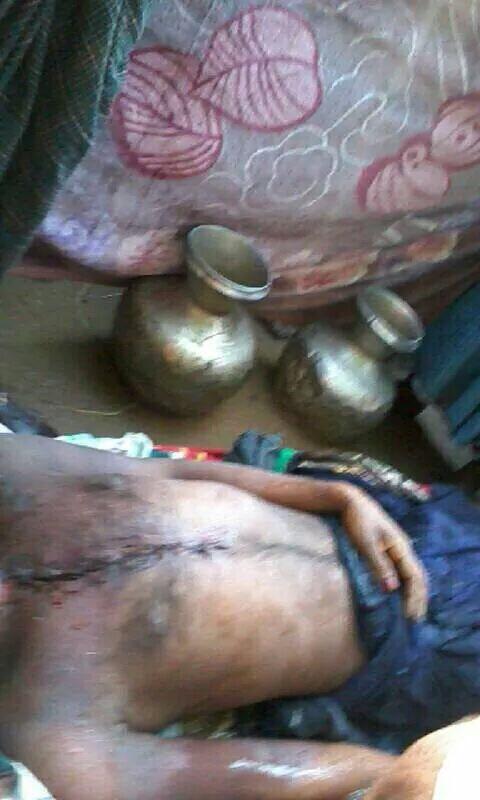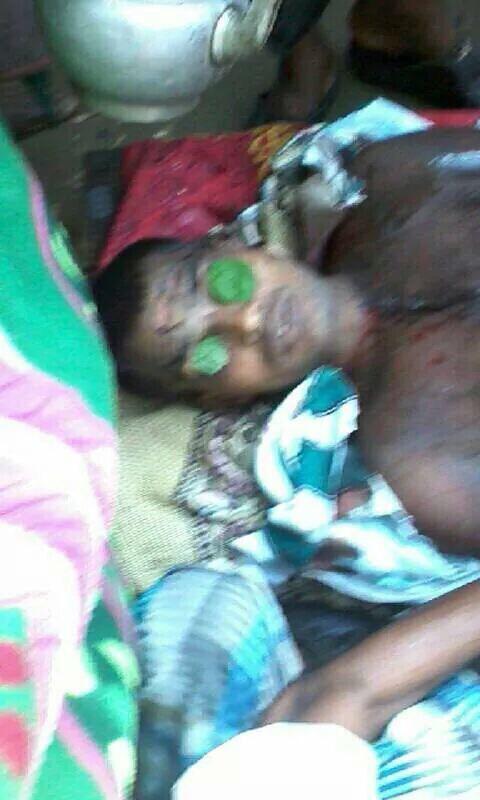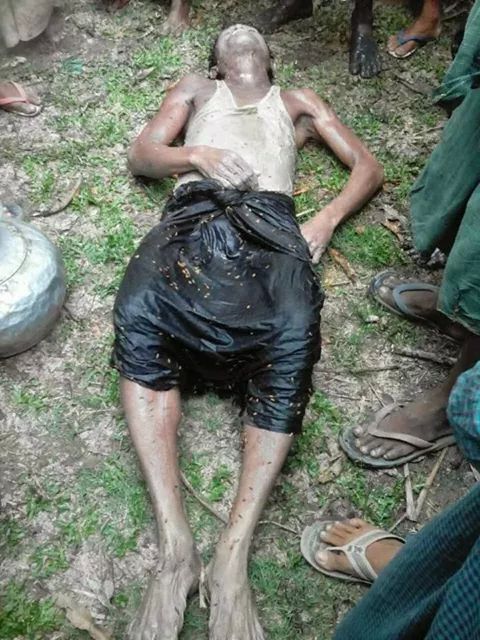


The intensity of arbitrary arrests and abuse cases has been increasing and widespread reports of incidents have been reported in recent days and weeks across Arakan State in Burma. Late yesterday, (Friday 17th Oct) reports began surfacing of the violent abuse and eventual murder of a Rohingya villager from Naisa Faru in Maungdaw township, North Arakan.
Having been arrested some five days prior, Abu Tayyeb Kabir Ahmed, aged 32 and father to three young children, had faced questioning which led to violent abuse by Burmese Border Guard Force agencies. He had been accused by the authorities of having unfounded and unproven ties and links with Taliban and terrorist cells. Ahmed’s corpse was returned to his family on Friday morning by an officer of the BGF with all his internal organs removed. His chest had been cut open and the wounds were still open.
(images below, please be aware that you may find the images distressing)


Community leaders had pressed the BGF officer for details of the man’s death but the officer refused to answer the villagers questions. Rohingya MP U Shwe Maung had said that he would be pressing the Government in Naypidaw on this shocking case of abuse in the coming days.
In a separate incident, Burma Times reported the death of Abu Tayib, aged 27 from Nga Ku Ya in Maungdaw township on Thursday 16th October. Tayib had travelled to Bangladesh earlier in the month for medical treatment after being refused treatment in Burma by Rakhine authorities. On his return BGF officers held him under arrest and his dead body was returned to his family on Thursday showing similar signs of abuse as Ahmed from Naisa Faru village.

Tensions have been increasing since September and many activists and political analysts have commented that this is part of a strategic plan to implement a Rakhine Action Plan against the Rohingya. This follows a country wide census where many Rohingya were forced to identify themselves as ‘Bangali’ as opposed to Rohingya. Dr Wakkar Uddin, leader of ARU (a worldwide body representing the Rohingya) had presented to the UN earlier this month that the forced ‘Bangalization’ of Rohingya was evidence of ethnic cleansing by the Burmese Thein Sein led government.
The conflict and abuse against the Rohingya is part of the wave of attacks which had flared up in June 2012. Today, it is reported that 200,000 Rohingya find themselves in displaced camps in the most squalid of conditions. The UN describes the Rohingya as one of the most marginalised stateless communities in the world.